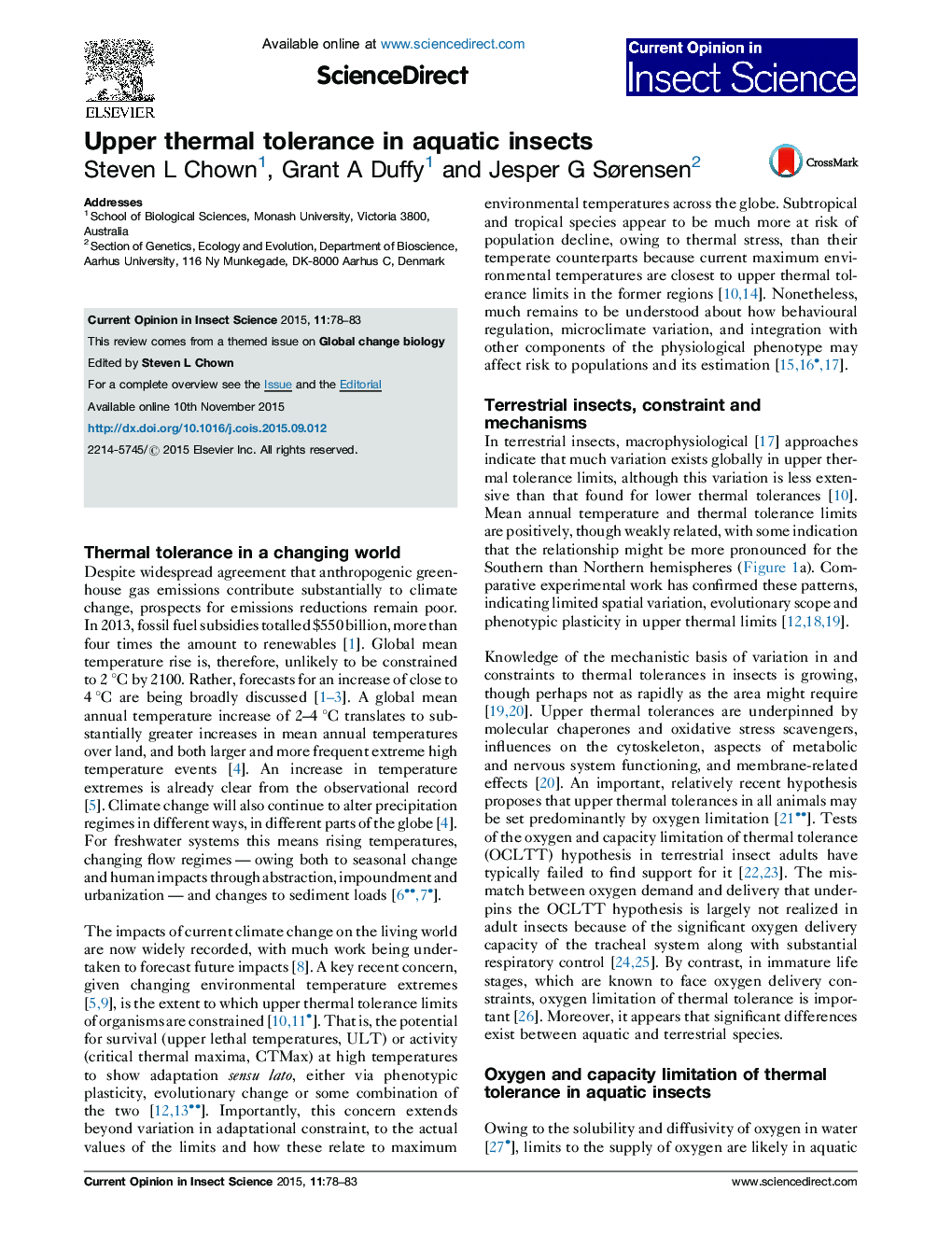| Article ID | Journal | Published Year | Pages | File Type |
|---|---|---|---|---|
| 4508159 | Current Opinion in Insect Science | 2015 | 6 Pages |
•Owing to the characteristics of their contrasting habitats, aquatic and terrestrial insects will respond differently to global environmental change.•A synthesis of aquatic insect thermal tolerance studies identified a weak latitudinal pattern of upper thermal traits.•Average upper thermal tolerances of aquatic insects are generally lower than those of terrestrial species.•Immature life-stages have lower thermal tolerances than adults.•Geographic biases in aquatic insect physiological studies highlight the need for further experimental work.Given global climate change, much attention has been given to the extent to which upper thermal tolerance limits in terrestrial and marine metazoans might be constrained. A quantitative synthesis of the available information indicates that aquatic insects, and especially immature life stages, have a broader range of thermal tolerances, and a lower average thermal tolerance, than their terrestrial counterparts. The pronounced incidence of oxygen and capacity limitation of thermal tolerance in aquatic-dwelling stages and species is likely responsible for this pattern. A combination of high temperature and low water oxygen content is likely to be especially problematic for aquatic species. Maximum limits to upper thermal tolerance are similar among terrestrial and aquatic insects, verifying the generality of constrained upper thermal tolerances. These findings are, however, limited by the narrow geographic and taxonomic scope of assessments.
